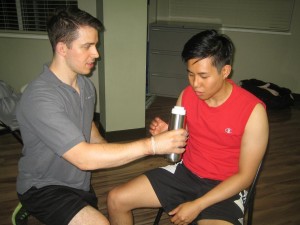
When the body’s thermoregulation fails because of too much external heat that is absorbed, hyperthermia occurs. The extreme levels of high temperature are usually absorbed by the body more than it can generate and it is an emergency condition requiring immediate medical care. Hyperthermia needs to be treated as soon as possible to prevent death or disability. Whenever the body’s temperature reaches above 104F, it will begin to show signs of heat stroke, a prominent indicator of hyperthermia.
Administering first aid and recognizing the signs and symptoms of hyperthermia is very important, as it may save the life of a victim.
What causes hyperthermia?
There are several reasons why hyperthermia occurs, one of which is prolonged exposure to warm, dry environments, especially under direct and extreme sunlight. Aside from heat stroke, other common forms of hyperthermia include heat fatigue, heat exhaustion, heat cramps and heat syncope. In addition to these, the risk for developing hyperthermia also increases depending on the lifestyle of an individual.
Usually, not drinking proper fluids, overdressing during hot climates, living in houses without proper ventilation and too much insulation, visiting highly populated and crowded places, and walking or running under extreme heat, all increase the likelihood of hyperthermia.
There are also several medical conditions that contribute to hyperthermia such as taking medications that increase urine output (diuretics) and decrease sweating, being dehydrated, being underweight or overweight, and age-related body changes.
Warning signs and symptoms of hyperthermia
As the victim’s condition becomes worse, warning signs start to appear including irritability, confusion, nauseous, increase heart rate and pulse, headaches, and temperature starting to increase. These are the warning signs for hyperthermia that should be watched out for. Once the temperature continue to elevate more than 104F, symptoms will start to appear including muscle spasms and cramps, difficulty of breathing, dry mouth and warm skin, and possible faintness. Keep in mind that the elderly are the most prone to hyperthermia, because they may initially faint before even exhibiting other signs and symptoms.
First Aid Tips for Hyperthermia
- First and foremost, it is important to move the victim to shaded, cool areas. Place the victim in a place with adequate ventilation.
- If the victim is overdressed, remove unnecessary clothing.
- If the victim is suffering from heat stroke and has fainted, call emergency assistance immediately.
- To help lower body temperature, apply ice packs or cold compress on the neck, armpits, groin and chest.
- If the victim is conscious, have him/her sip water to replenish lost fluids and help lower body temperature.
Having enough knowledge about hyperthermia is necessary to save someone’s life. It is therefore necessary to enroll in first aid courses to know more about emergency first aid provision.
Related Video On Hyperthermia:
Sources:
“Heat Induced Illness.” Australian Resuscitation Council. Retrieved online on June 19, 2014 from http://www.resus.org.au/policy/guidelines/section_9/heat_induced_illness.htm
“Hyperthermia First Aid.” Free MD. Retrieved online on June 19, 2014 from http://www.freemd.com/hyperthermia/home-care-first-aid.htm
